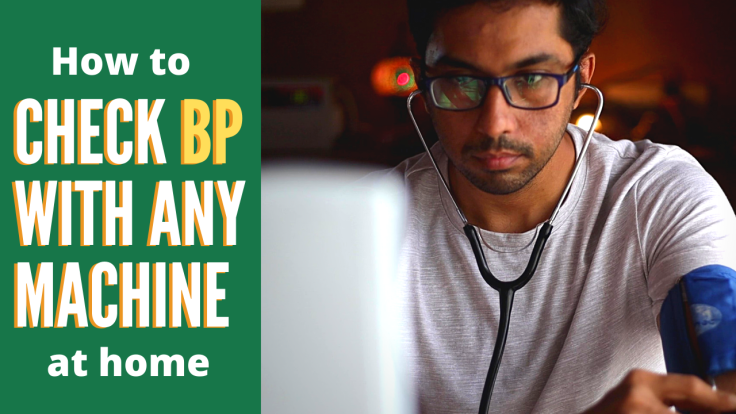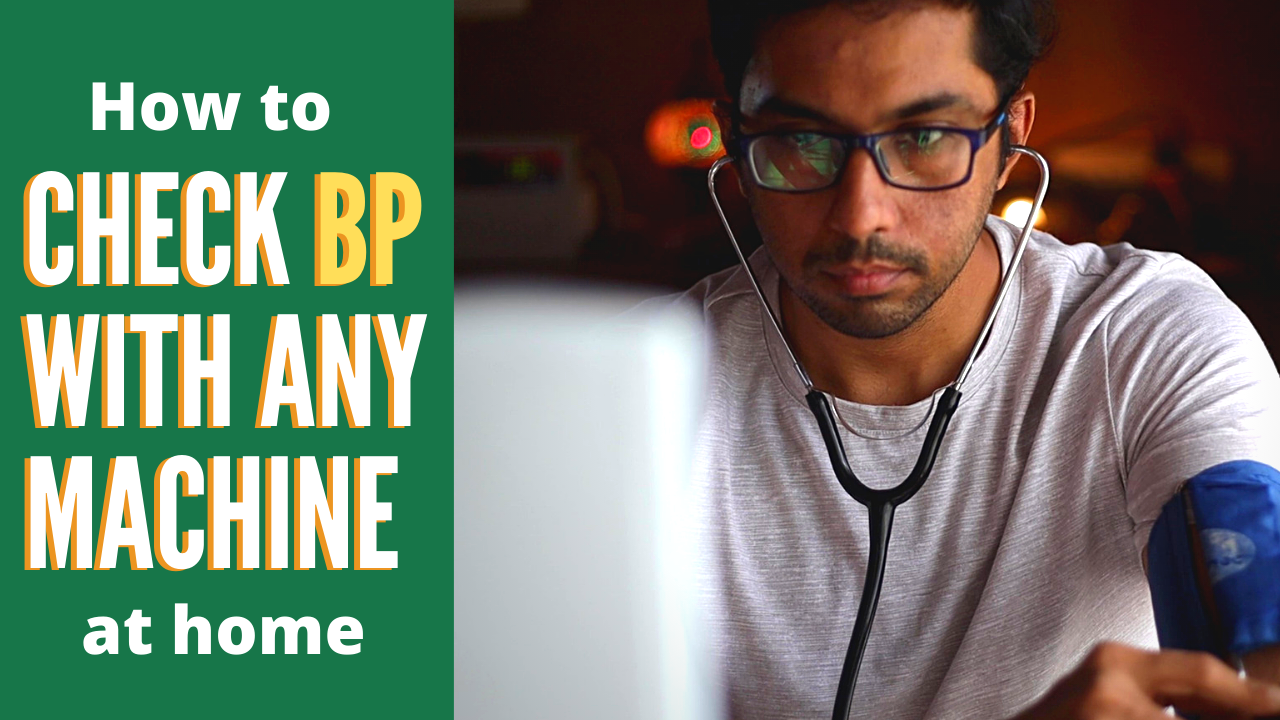 Social distancing is in the air and staying healthy is trending.
Social distancing is in the air and staying healthy is trending.
Its completely worth your while to learn some medical tricks yourself to save the trip or two to the hospital for something as menial as – getting your Blood Pressure checked.
So, here’s a stepwise breakdown of how you can measure your own Blood Pressure.
Things you will need –
- A mechanical Blood Pressure instrument
- A stethoscope if available
- Electronic Blood Pressure machine to make your life easier.
- A helping hand person ( ref to as “someone” )
Method 1: Auscultatory method with a mechanical instrument.
Advantage – Easy to do. Does not require a stethoscope
Disadvantage – Gives only half the information i.e only the upper value or ‘Systolic value of blood pressure”
Systolic – Pressure in heart when blood is pumped out
Diastolic – Pressure in the heart when it is at rest.
Step 1 – Attach the blood pressure cuff properly. Two inches above the crook of the elbow and one finger lose.
Step 2 – Place one finger on the radial pulse of the same hand.
Step 3 – Have someone pump air in the rubber balloon of the machine. You will feel the cuff tightening
Step 4 – Release the pressure slowly from the balloon. The value in the mercury chamber at which you feel your pulse again is your Systolic blood pressure.
Method 2 – Palpatory method
Advantage – Tells both Systolic as well as Diastolic values.
Disadvantage – Little complicated to perform. It requires a stethoscope.
Step 1 – Attach blood pressure cuff as before
Step 2 – Place the diaphragm of the stethoscope on the inner side of your elbow close the tendon which can be felt when you bend the elbow a little
Step 3 – Have some one pump air into the balloon while you hear carefully into the sounds of the stethoscope. Your thigh will start to feel tighter. Slowly there will come a pulsating sound “lubb -dupp” in your ear. It will disappear as pressure rises. Stop pumping air when it disappears completely.
Step 4 – Have the air in the balloon released slowly, you will see the mercury level falling.
Step 5 – The mercury level at which you hear the “lubb -dupp” sound again s your systolic blood pressure.
Step 6 – Let the pressure fall gradually. The mercury level at which the sound disappears again is your diastolic blood pressure.
I have also made a video explaining in more detail. Watch it here.
Now, if you have an electronic machine then your life is very easy.
All you have to do is attach the cuff properly and press a button. The machine will not only tell you your blood pressure but also your pulse rate.
Any value above 130/90 mm of mercury is alarming. Meet your doctor immediately.
Any value below 90/60 mm of mercury is alarming. Meet your doctor immediately.
You can read more about your blood pressure readings here.
I would love to take your questions here and here.
video of the week :

Leave a comment